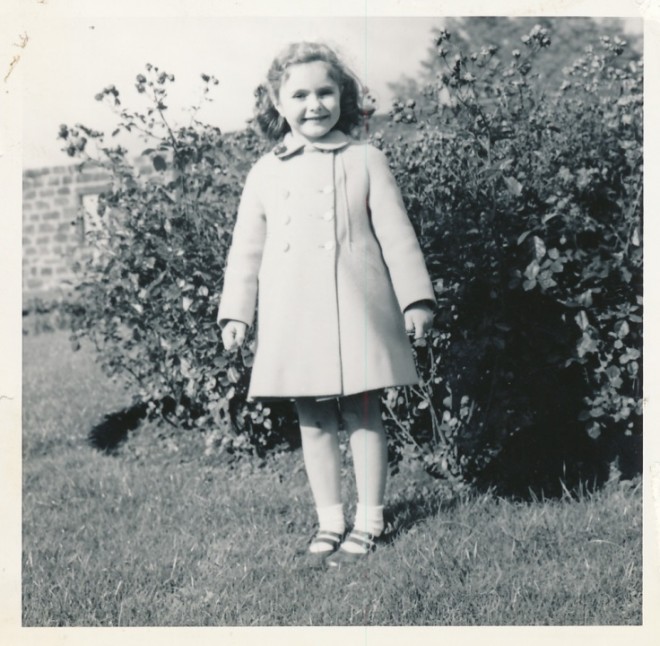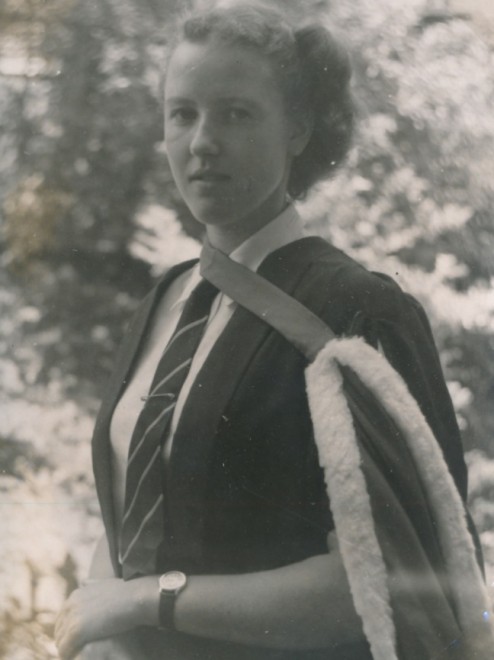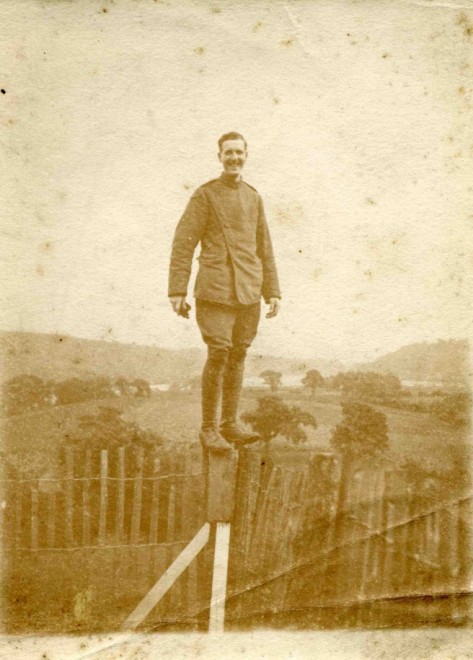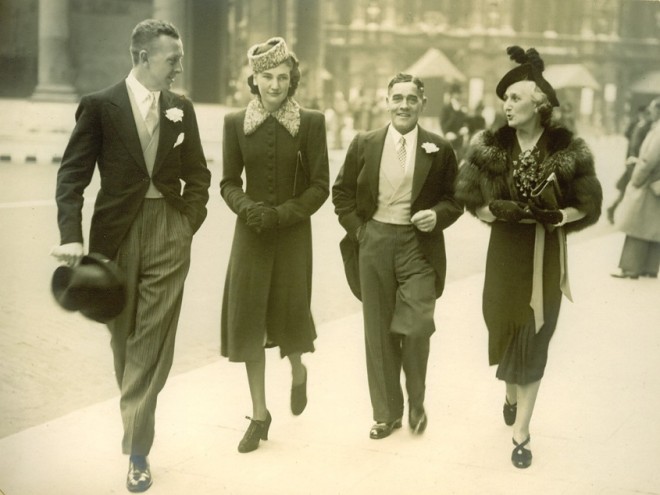How well do you know the people and stories in your family album? Do you even print out photographs, to paste in an album – or do you store them on your phone? The exhibition, Photography: A Victorian Sensation gave staff across National Museums Scotland an excuse to dust off their family albums and share their stories.

We needed to gather around 300 photographs for our exhibition introductory film, illustrating just how many instant images we take now and how there are fewer and fewer as we roll back in time. What better way to do this than to ask colleagues across the museum to send us their images?
Staff rose to the challenge, and here are just three of the stories that emerged…
Dr Alison Morrison-Low, Principle Curator, Science and curator of Photography: A Victorian Sensation

“This is Ann Rawson Gordon (1928-2006), graduating B.Sc. (Hons.) from the University of St Andrews in summer 1950. Born in Monifieth, she had moved with her family to St Andrews before the Second World War, where she had attended the famous girls’ school, St Leonards, as a day girl. She read biological sciences at university, and was particularly interested in marine parasites – leading to long hours in a dinghy in St Andrews Bay. Her degree enabled her to get a job at the Nature Conservancy in Edinburgh, where she researched arachnids and was involved in the setting up of the Beinn Eighe National Nature Reserve, which was established in 1951, the first such area to be designated in the United Kingdom.
“However, the day she became engaged to my father – James Morrison-Low, an electrical engineer, who came from Fife – her civil service career ended. This was in January 1951, and they were married two years later on 13 June 1953. They had three daughters and one son, all of whom she enjoyed teaching about aspects of the natural world and the beauties of the Scottish countryside.”
Victoria Adams, Assistant Curator, Science and Technology
“I am very proud to have several photographs of members of my family in the introductory film, putting them alongside those of the photographic giants Daguerre, Talbot, Archer, Hill and Adamson.
“Gathering these photos prompted several reminiscences and sharing of family histories; it’s fascinating to see physical similarities, and hear of personality characteristics echoing down the generations. We’re really not that different to our ancestors, just inhabiting changing contexts of time and technology.

“This photograph shows my great grandfather Brittain Adams standing on probably an English fencepost in his Royal Flying Corps uniform, just before he was sent to France in 1915. I’m very glad he survived not only both World Wars, but also his own youthful exuberance!
“I also found an unexpected direct personal link to other photographs in the exhibition. Hill and Adamson famously photographed dissenters at the Great Disruption of 1843; my great-great-great-great grandfather John Macdonald, elder of Dunfermline Abbey Church was present and apparently ‘vowed that his walking stick had done so much thumping with applause that it had shortened by quite an inch’. If only I could find his portrait stored up in my parents’ attic…”
Victoria Hanley, Paper Conservator, Collections Services

“This photograph from the 1940s shows relatives from the paternal side of my family attending a formal occasion, maybe a wedding, in London.
“The young lady is my great aunt Lola Jeffrey (b.1922). We don’t know who the gentleman to her left is but it may have been her prospective husband, an American named Phil Maslen. Lola worked for the London florist Constance Spry and, during the war, signed up with the AFS (Auxiliary Fire Service). She later moved permanently to California with her husband.
“To her right is my great grandfather, Fred Hanley, who lived with his wife Daisy in Wallasey, Cheshire. He was a successful lead violinist for the Halle Orchestra and Liverpool Philharmonic. The lady on the right is Lola’s (and my grandmother’s) mother, May Jeffrey, whose husband was a shipping broker for Gerard & Hey, a company that we can find no record for these days. The Jeffreys lived in Richmond, London.”
We are grateful to everyone across National Museums Scotland, their friends and family, who contributed images for our film. We hope this has inspired you to look out your own family albums and find out more about the people and stories they contain.
Header image: 1/4 plate daguerreotype, depicting a family group of a mother and six children in front of a library backdrop, in a case lacking the protective half, by an unknown probably itinerant photographer, 1840s – 1850s. © Howarth-Loomes collection at National Museums Scotland.
Photography: A Victorian Sensation is showing at the National Museum of Scotland until the 22 November 2015.